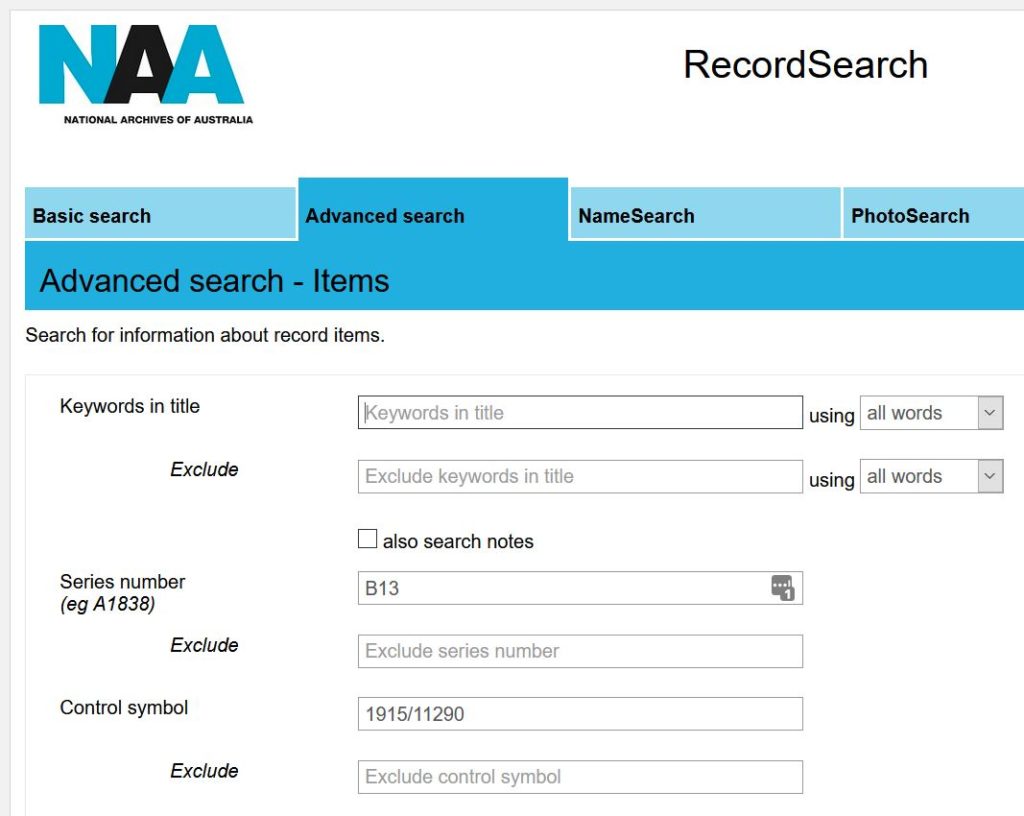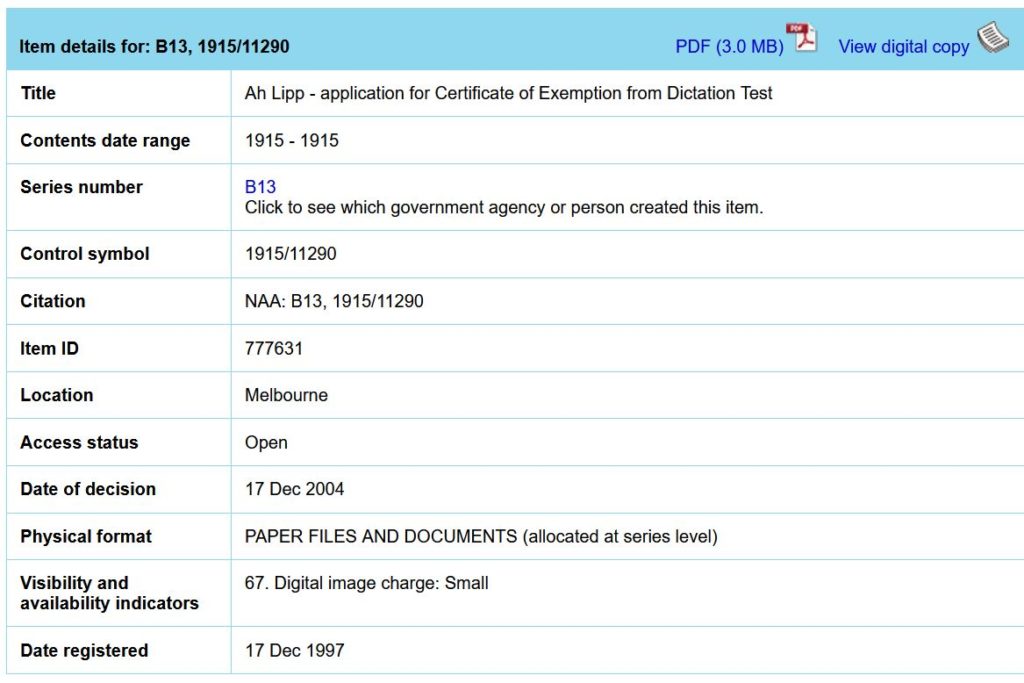By Sophie Couchman (Chinese Australian Family Historians of Victoria)
Using a person’s name or the C&E number you can use the National Archives of Australia’s RecordSearch (https://recordsearch.naa.gov.au) to search the B13 ‘General and classified correspondence, annual single number series’. This is the main series of correspondence of the Collector of Customs in Melbourne held by the National Archives of Australia in Melbourne. It contains correspondence related to immigration restrictions, tariff classifications, excise, prohibited literature, administration, smuggling, prosecutions, shipping, exports and imports, reflecting the changing functions of the department.
Many of the entries in the Victorian CEDT Registers list include an ‘C&E number’. As people’s names can sometimes be spelled in different ways or misspelled it can be useful to sometimes search using this number instead of their name (see Mrs Lup Mun for an example of this).
A C&E number looks like a year (or the last two digits of a year) followed by a slash symbol and then a number. Latter registers include a special column to write this number, earlier registers have it written in the notes section. Ah Lipp’s C&E number when he travelled in 1915 is listed in the Victorian CEDT register as 15/11290. This number (written as the full year followed by slash followed by the number, for example 1915/10290) can be used to search the B13 correspondence series in addition to searching using the person’s name.
Included in this series are a files documenting CEDT applications. Originally the series would have included a file for each CEDT application but unfortunately the series has been extensively culled and so only a small proportion of files survive. A typical CEDT application correspondence file contains the following: Application form, police statement, two references and copies of the Certificate Exempting from Dictation Test, Summary coversheet (see example below).
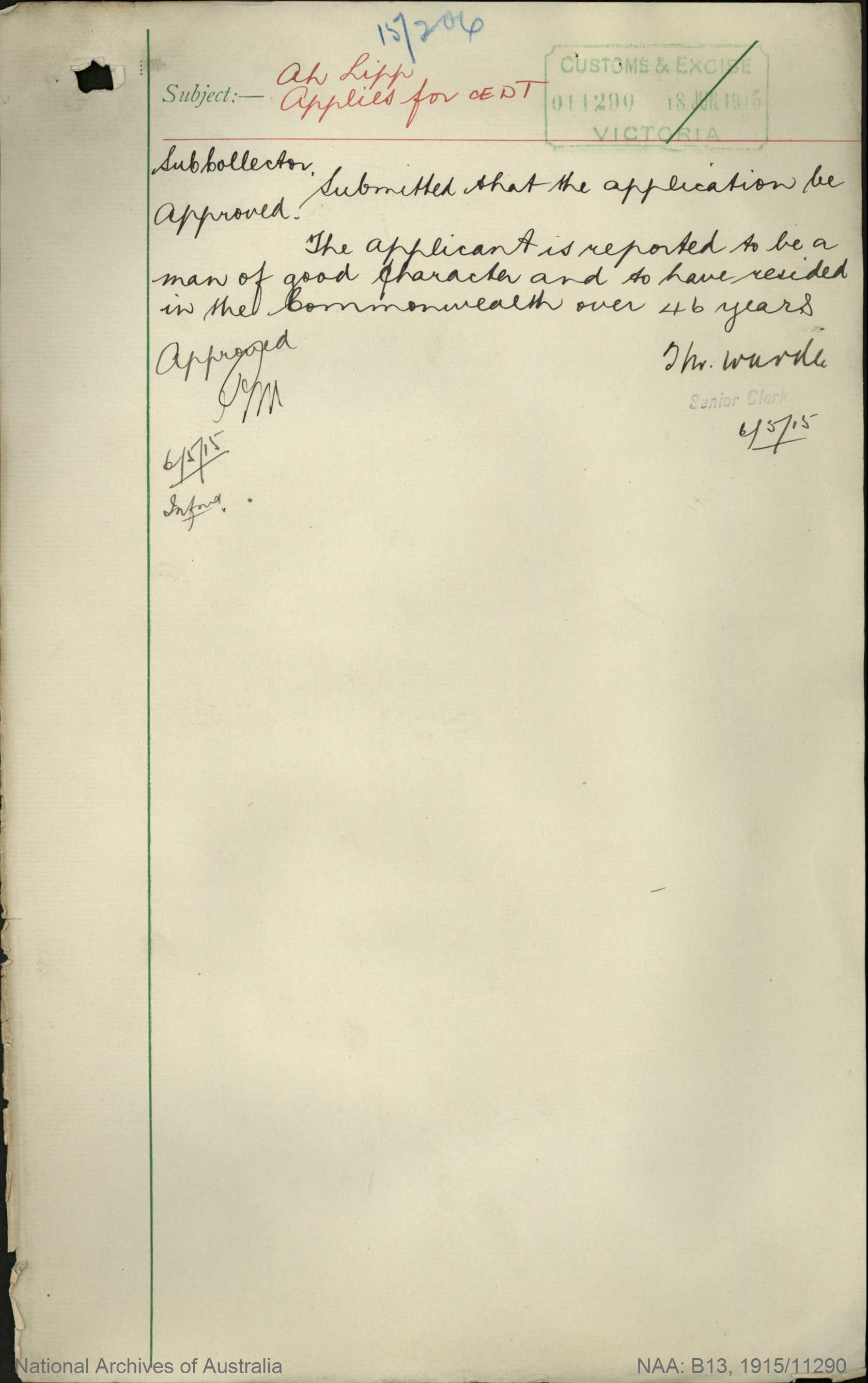
Cover sheet 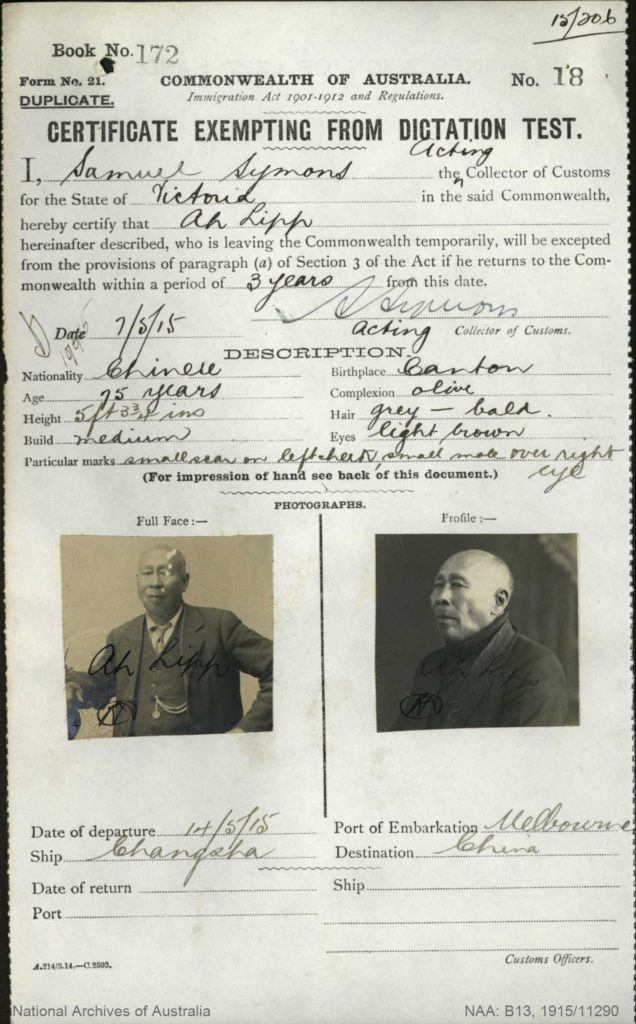
CEDT (front) 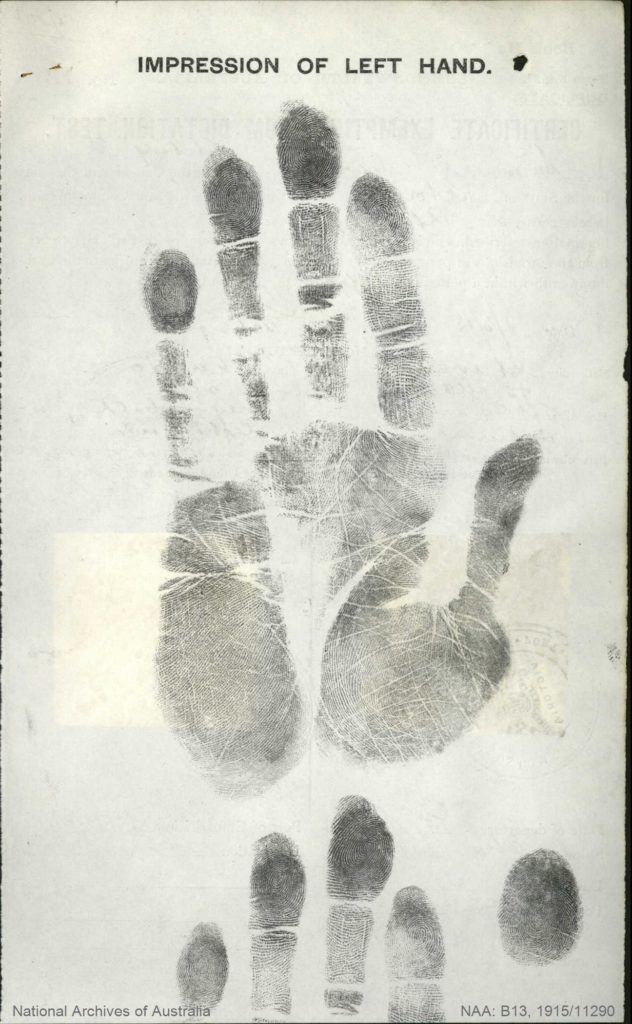
CEDT (back) 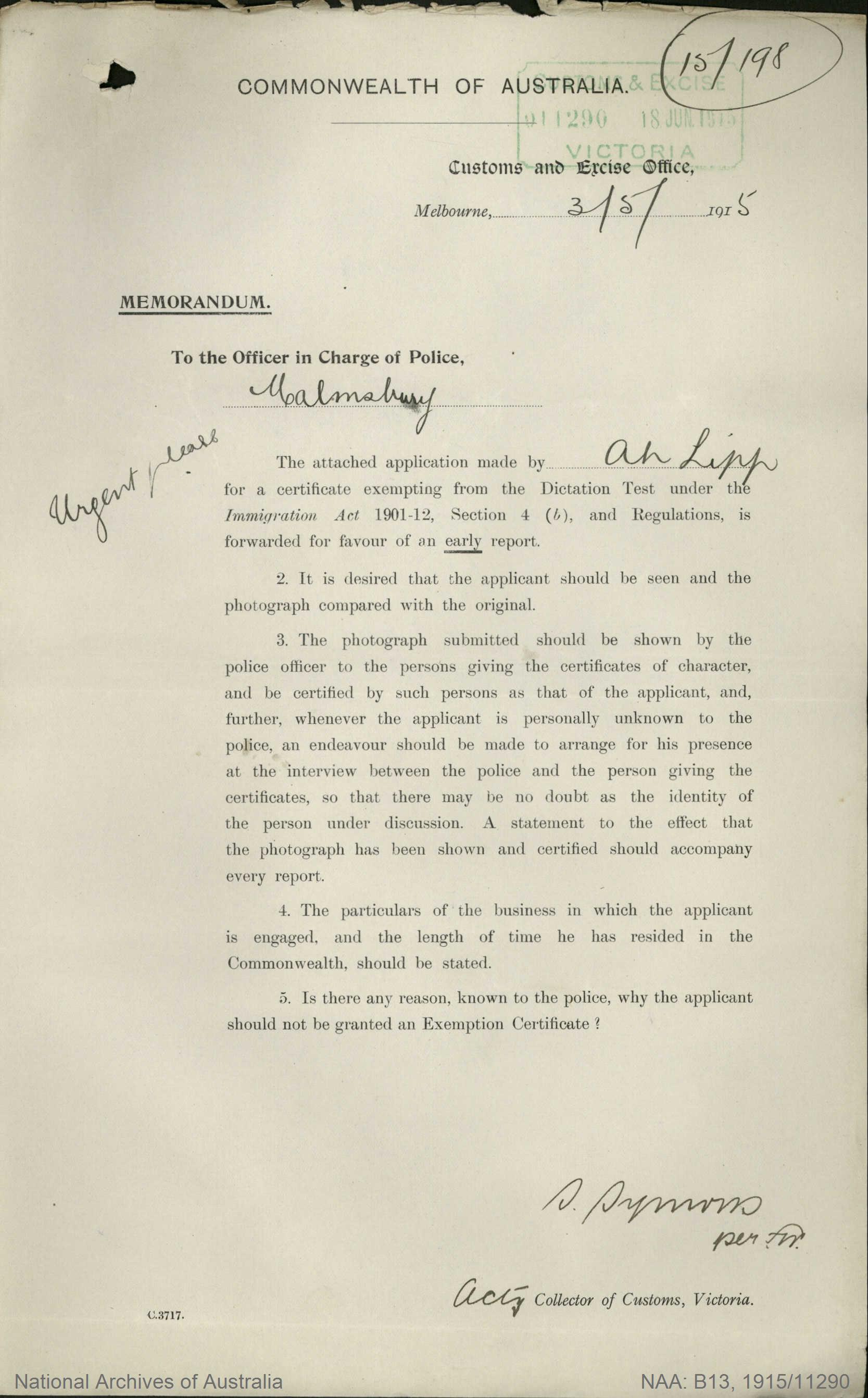
Police memo 
Police report 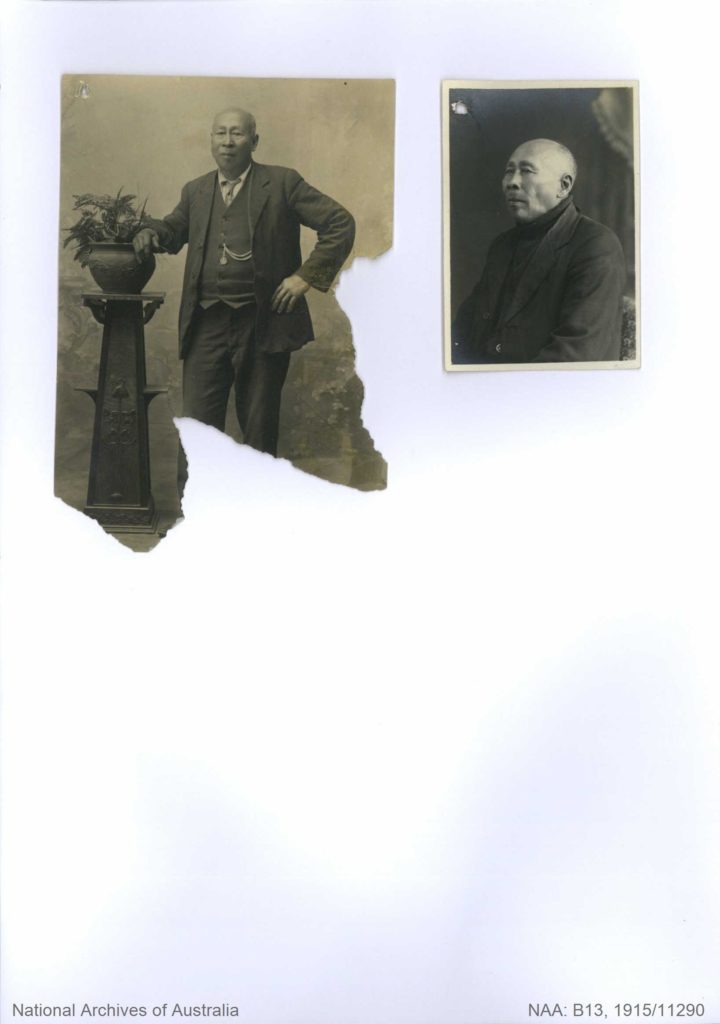
Ah Lipp’s spare portraits 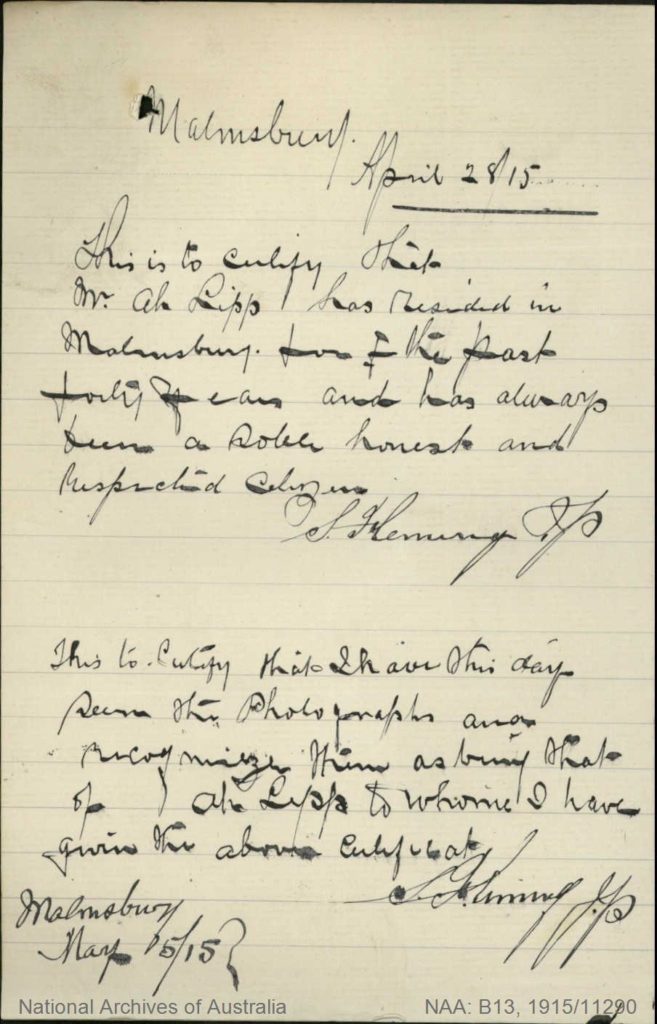
Personal references 
Personal references 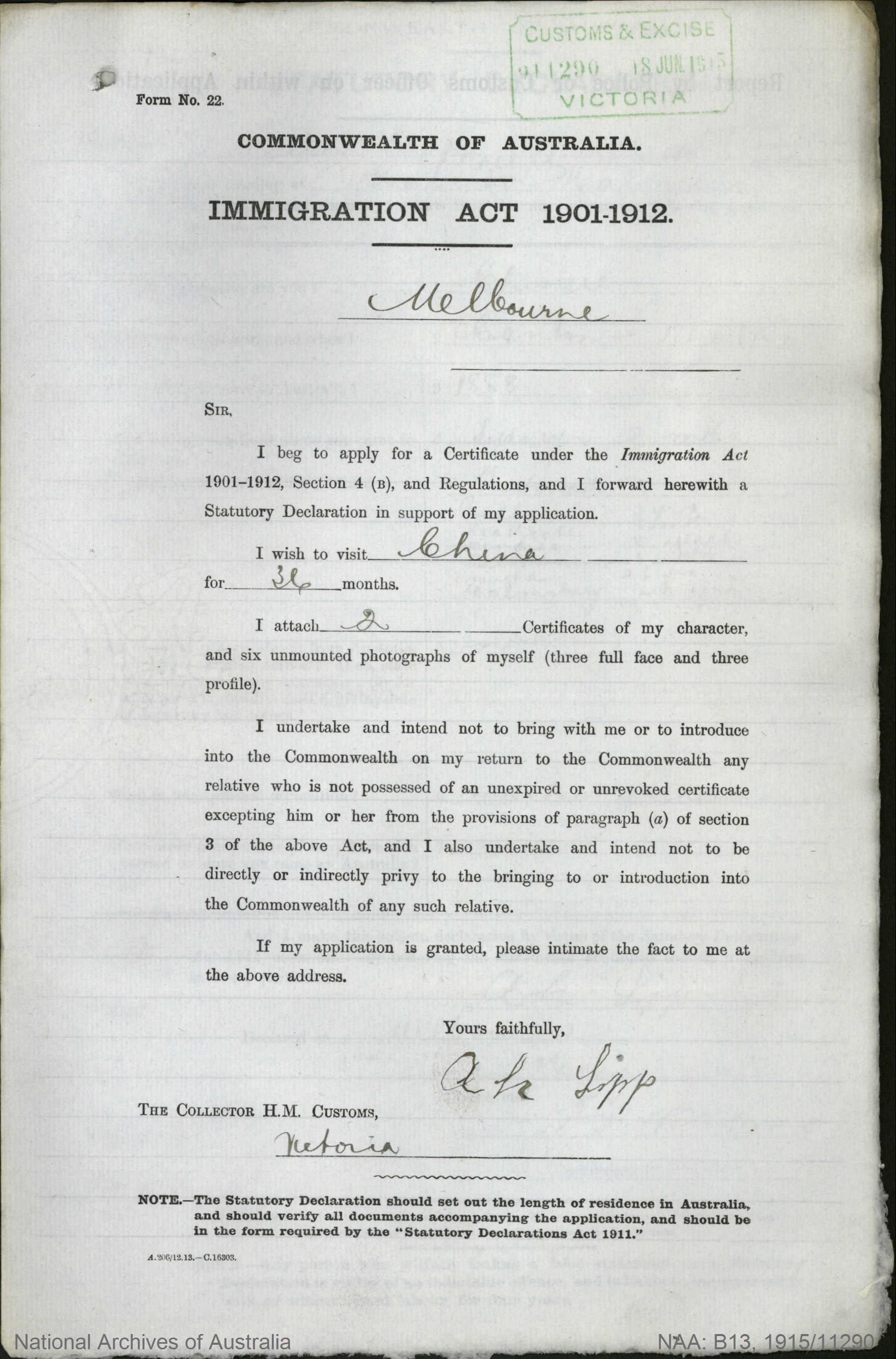
CEDT application form 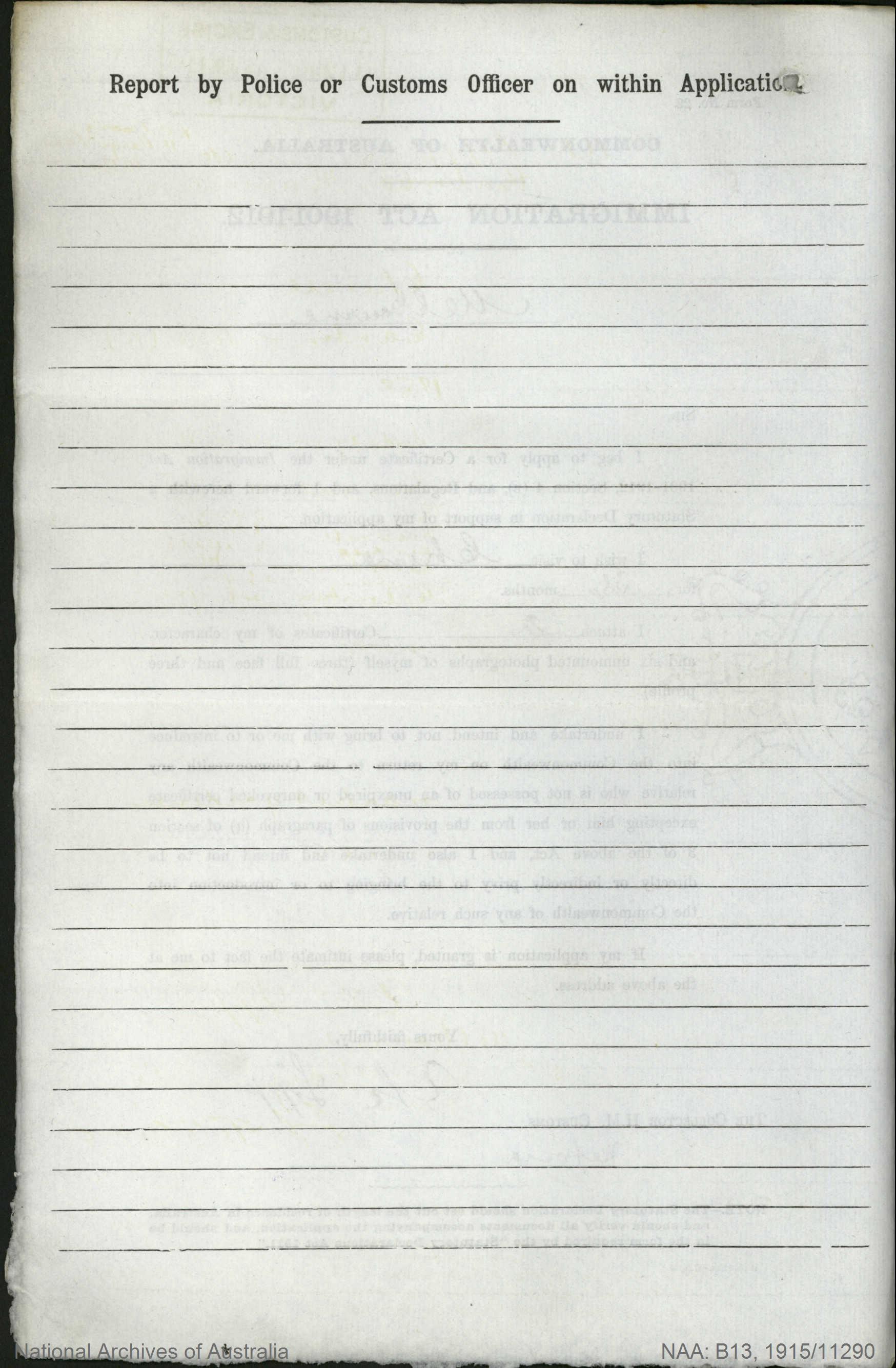
CEDT application form 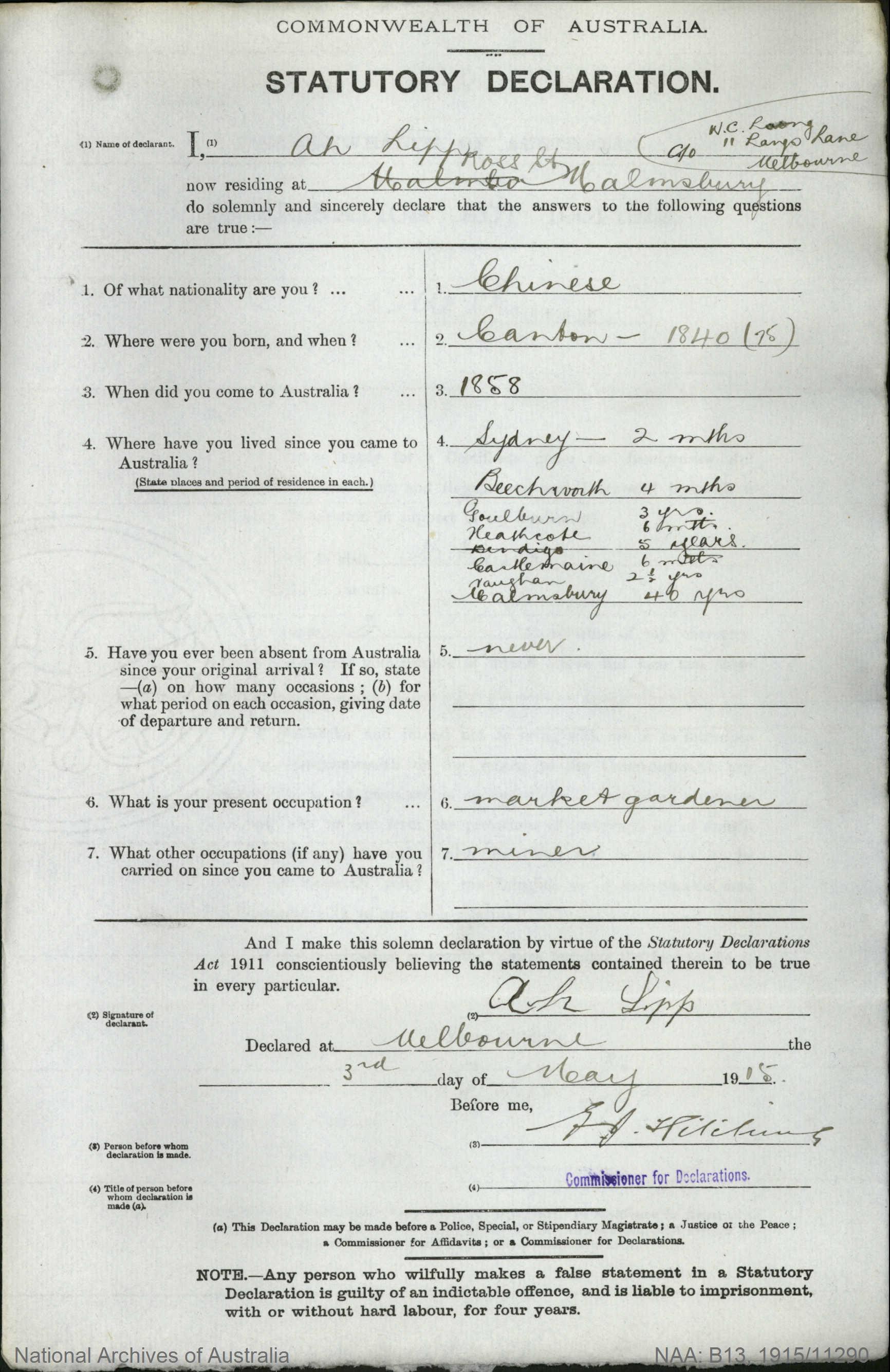
CEDT application form
[NAA: B13, 1915/11290]
Information supplied by Ah Lipp in the Victorian CEDT Registers indicates he applied for a CEDT in 1915 when he was 75 years old (making him born around 1840). He had been in the Commonwealth for 57 years (suggesting he arrived around 1858). He left on the Changsha on 14 May 1915 and there is no information about any return to Australia.
Information provided in his file in the B13 Series confirms the year of his birth and year of arrival in Australia. Ah Lipp’s CEDT certificate on file also show no indication that he returned to Australia despite being able to. At age 75 and after 57 years living and working in Australia, this is perhaps not surprising.
We also learn that he was very mobile during his time in Australia. He spent 2 months in Sydney, 4 months in Beechworth, 3 years in Goulburn, 6 months in Heathcote, 5 years in Bendigo, 6 months in Castlemaine, 2 1/2 years in Vaughan before settling in Malmsbury for 40 years. He worked initially as a miner and then turned his hand to market gardening, with a contract, according to the favorable police report with the police station. During this time he never left Australia. He signed his CEDT application in English in a fair hand. Ah Lipp obtained character references from the Town Clerk and a Justice of the Peace in Malmsbury.
He wears slightly different clothing with a different studio background in the identification photographs he provides for the application suggesting they were taken at slightly different times. He wears a three piece suit with decorative fob in both photographs, probably his best suit. His hands and the crumpled shirt and suit betrays his working class background but the fob suggests he’s had some prosperity.
As can be seen these files can be rich in information, particularly those from later years because files were ‘top numbered’. This means that the file for a person who applied for a second CEDTs was renumbered and filed with the later CEDT application. So some files document multiple journeys.
Unfortunately not all of the B13 series files have been digitised. You can pay for them to be digitised or visit the National Archives of Australia reading rooms in North Melbourne to read and copy them yourself.

